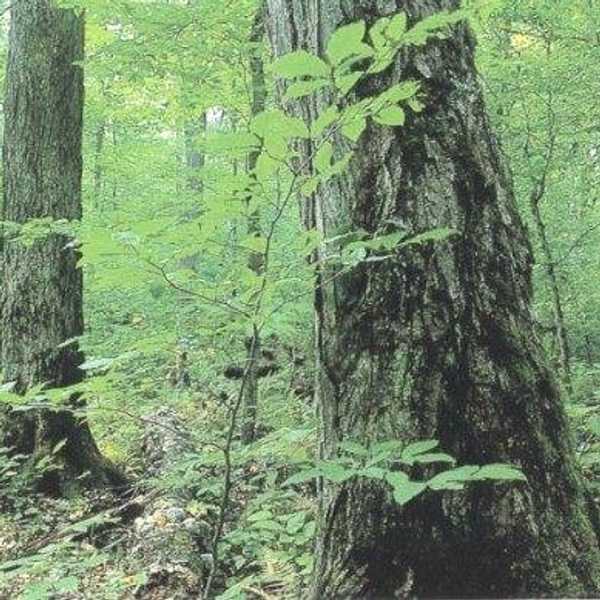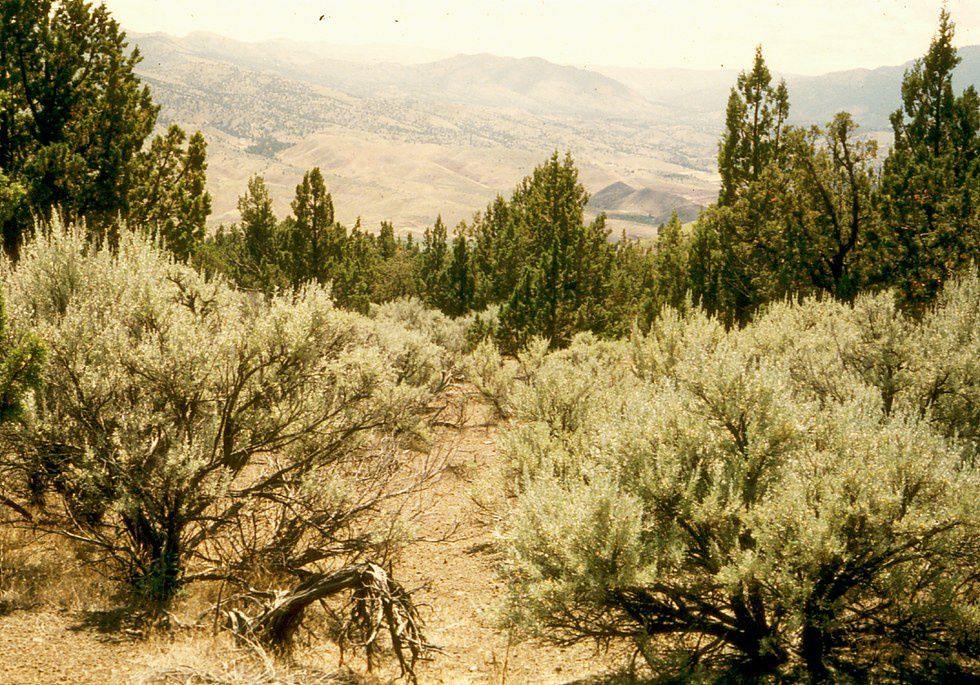Anyone who has ever been to Montana can establish that there is something special about the state. From its steep mountain peaks to its golden plains, Montana truly is a place of diversity. While traveling across the state, it is not uncommon to see wide rivers, dry semi-deserts, tall pine trees, small wildflowers, large herds of antelope or even a grizzly bear. With such a collection of abiotic and biotic factors, one must wonder how Montana can offer such an assortment. To begin to understand the ecology of this amazing place, one must start “at the bottom of the food chain,” so to speak. All foods consumed by humans can be traced back to photosynthetic plants or primary consumers; primary consumers determine the distribution and abundance of all organisms (Ridenour). However, not all plants are the same in each biome or “a complex of terrestrial communities of very wide extent, characterized by its climate and soil" (Evert & Eichorn G-3). In fact, plant populations vary dramatically across biomes. This is partially due to the difference in abiotic factors across these distinctive areas. One abiotic factor that has a great impact on plant ecology in Southwest Montana was the presence, absence, and frequency of fires. In this article, I will discuss the impact of fire on plant species in several biomes with particular focus on fire’s suppression by human intervention.
Riparian areas are synonymous with a wetland environment. They tend to be moist and the soil tends to contain a large amount of leaf litter as well as being saturated with water. In such a moist environment, one wouldn’t expect fire to have much of an impact on plant species or growth. However, across Southwest Montana and in many other areas of the country Psudotsuga menzeisii, also known as a Douglas Fir tree has seeded in aspen groves and begun to outcompete the aspen trees for water and light. In the presence of cyclical fires this would not happen, due to the aspen’s fire-adaption. Aspen trees have the unique ability to remain alive and make “copies” of themselves through their root systems. Under normal fire conditions the Psudotsuga menzeisii would be killed in the flames while the Aspens survived (Ridenour 2015). This demonstrates how fire can dictate what plants are dominant in a biome. In this Aspen grove under normal conditions would have been dominated by Aspen trees in its overstory. Yet, due to fire suppression, both aspen and Psudotsuga menzeisii are often dominant in this strata.
Fire suppression by humans has also lead to an increase of cases of Blister Rust and Pine Beetles in the Subalpine. A very important gymnosperm in the Subalpine or Upper Montan Conifer, is the Pinus albicaulis, which is suseptable to Blister Rust and Pine Beetles, both deadly to this tree. According to Shawn Thomas McKinley, a graduate student at the University of Montana, the spread of Pine Beetles, which is a beetle that feeds on the xylem and phloem of pine trees, eventually killing the infected plant can be significantly slowed by cyclical fires. This is because Pine Beetle larvae can be killed under a hot enough fire. Moreover, a fire with high enough temperatures to kill mature beetles effectively prevent the Pine Beetles from reproducing in the first place. The more troubling corruption of the Pinus albicaulis species is the infection of Blister Rust. Although a fire does not necessarily stop the spread of Blister Rust, it is vital for the replenishment of the Pinus albicaulis population after a Blister Rust or Pine beetle epidemic (McKinley). Thus, if cyclical fires are allowed to move through the Subalpine the effects of parasites and disease could be limited. With such actions taken, I would presume there to be an increase in the Pinus albicaulis population of the Subalpine. To further and perhaps solidify this point, in a journal article forRestoration and Management Notes, S.F. Arno and Harrington state “Human intervention…has disrupted long-established patterns of fire and regrowth. The ecological changes that have resulted from this disruption are described, including increased severity of wildfires, and more damaging insect and disease epidemics (Arno Douglas-Fir 34).”
Perhaps the biome that has been most greatly impacted by fire suppression in Southwest Montana is the Shrub-Steppe biome. Historically, Artemisia tridentada or sagebrush, wasdominant in Shrub-Steppe and Psudotsuga menzeisii were not; they were confined to rocky outcrops. Due to lack of cyclical fires, conifers have been encroaching on Shrub-Steppe habitat. In a study done by Emily K. Heyerdahl, Richard F. Miller and Russel A. Parsons, the scientists sampled fifty plots of historical Shrub-Steppe of Psudotsuga menzeisii savannas and computed how old the trees in that plot were, eventually determining if the trees had been there prior to the last great fire surge. They found that “Douglas-fir trees have established in all but six plots since the past fire surge in 1855. Tree density has increased both in plots that were historically sagebrush-grass and those that were Douglas-fir (Heyerdahl 112).” This experiment is further solidified by S.F. Arno’s statement in the Journal of Range Management. “Since 1890, fires have been rare as a result of livestock grazing (which removes fine fuels), fire suppression… [has] allowed extensive areas of Douglas-fir ‘invasion’, now of pole size, to become established in former grasslands" (Arno Range 273).
It is evident that fire suppression has had an immense impact on the abundance and kinds of dominant species in several biomes but why do we care what fire suppression is doing to Montana’s biomes? According to the McKinley thesis, Pinus albicaulis is heading down a road of which could lead to not only the decrease in populations of the tree, but also to a decrease in population of its dependent animals such as The Clark’s Nutcracker and Red Squirrels. Furthermore in the Riparian areas Aspen groves have been severely depleted by the invasion of Psudotsuga menzeisii (Ridenour 2015).Fire suppression in the Shrub-Steppe may even have a hefty on a wide, global scale “Tree and shrub encroachment into grasslands and savannas of western North America over the past century may have global implications for land surface-atmosphere interactions and the carbon cycle (Heyerdahl 107).” All ecological processes are interrelated and not mutually exclusive; what effects one will effect another. These ideas pose the question about human involvement in fire suppression. Should humans allow cyclical fires to burn or is the threat to human property and industry too great? These are just a few of the unanswerable questions in regards to fire suppression in Southwest Montana and the rest of the country.
Bibliography
Arno, S.F and Harrington. “Douglas-fir Encroachment into Mountain Grasslands in Southwestern Montana.” Journal of Range Management 39.3 (1986): 272-75. ProQuest. Web 4 Sept. 2015.
Arno, S.F and Harrington. “Restoring Fire-dependent Ponderosa Pine Forests in Western Montana.” Restoration and Management Notes 13.1 (1995): 32-36. ProQuest. Web. 4 Sept. 2105
Evert, Ray F., and Susan E. Eichorn. Biology of Plants. 8th ed. New York: W. H. Freeman, 2013. Print.
McKinley, Shawn Thomas. Ecological Process and Blister Rust Epidemic: Cone Production, Cone Predation, and Seed Dispersal in Whitebark Pine (Pinus albicalis). Thesis. University of Montana, 2007. N.p.:ProQuest Dissertations, 2007. Print
http://fwp.mt.gov/fishing/siteDetail.html?id=28136...
Ridenour, Wendy. Class lecture. 24 August 2015. Field Lecture 25 August 2015. 26 August 2015. 27 August 2015
























